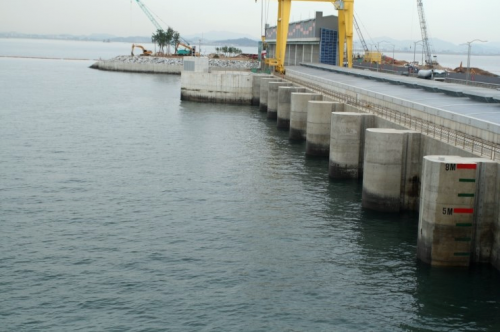
Most of the world has already begun shifting their energy production from fossil fuels, like oil and natural gas, to renewable energy sources, such as solar, wind and hydroelectric. Another type of energy source that is gaining popularity is tidal energy. It is essentially a form of hydropower that converts energy obtained from the tides into electricity. Tidal power is not used widely yet, but there is great interest in the technology since tides are typically more predictable than wind energy or solar power, and recent technological advances and design improvements have made it likely that we will see an increase in the use of tidal power.[i]
-
Renewable
The huge advantage of using tidal power is that it’s renewable-the tides will always come and go. High and low tides are a result of the gravitational fields from both the sun and moon combined with the earth’s rotation around its axis. With fossil fuel sources, such as oil and natural gas, there is a finite amount and once it has been depleted, it would take millennia to develop more. However, since the gravitational fields of the sun and moon, combined with earth’s ability to rotate, are not going to cease any time soon, tidal power could potentially be an infinite source of energy.[ii]
-
Green
Tidal power is also a ‘green,’ or environmentally friendly, energy source. With many fossil fuel energy sources, when they are used, a carbon emission is released. Sometimes referred to as a greenhouse gas, this emission is harmful to the environment. It absorbs and emits radiation. Human activities have contributed to a 40% increase in the amount of carbon dioxide in the atmosphere (since the Industrial Revolution began). It is thought that if greenhouse gas emissions continue at the present rate, we will soon reach a point in which harmful and irreversible effects will occur that affect ecosystems, biodiversity and the livelihoods of individuals on a global scale.[iii]
-
Long life
Though there may be a high initial cost in setting up a tidal power plant, there is the expectation that they will enjoy a long life, thereby ensuring that the energy produced from these plants remains cost-competitive. It is thought that a single tidal plant could produce energy for 75 to 100 years after it has been constructed.[iv] Most tidal plants are relatively new, so there is not a long history of tidal plants lasting this long, however, the first one developed was the Rance Tidal Power Station in France, which opened in 1966. More than fifty years later, this power station is still operating.[v]
-
Predictable
With other renewable energy sources, such as solar and wind, the source is unpredictable and can vary widely from day to day and month to month. Tidal currents, on the other hand, are highly predictable. And in fact, we are currently able to study the tides in such detail that optimizing the placement of the equipment is highly feasible.
-
Low maintenance costs
Once the tidal plant is constructed, most of the costs that it will incur during its lifetime have already been experienced. While there may be occasional small maintenance costs, they are much lower than other energy sources. Also, tidal plants use the most abundant element on earth to produce energy-water, which means the cost of creating the energy after construction is very, very low. The abundancy of water also means that this energy source could potentially be tapped from almost anywhere on the planet.
-
Efficiency
Water is approximately 1000 times denser than air, which means that large amounts of energy could be produced even at very low speeds. Some calculations show that power can be generated even at 1 meter per second.[vi] The total harvestable energy from areas close to the coast is estimated to be around 1 terawatt worldwide.[vii]
-
Versatile
Tidal power can be generated using four different methods. The first is using a tidal stream generator which makes use of the kinetic energy of moving water that propels turbines in the same manner in which wind powers wind turbines. The turbines can be horizontal, vertical, open or ducted and they can sometimes be built into existing bridges where they are entirely submerged at the bottom, where tidal velocities are the greatest. The second method, tidal barrages, uses the potential energy in the height between high and low tides. Dams are strategically placed and when the tide begins to rise, the increase in tidal power is funneled into a reservoir that holds the potential energy. AS the tide recedes, this energy is converted as the water is released through large turbines that create electricity. The third method, which has yet to be tested in a real world application, is dynamic tidal power. This would use the interaction between potential and kinetic energies in tides. With this method, very long dams would be constructed from the coasts stretching out into the sea or ocean. Tidal phase differences are experienced across the dam, which leads to significant water-level differentials in the shallow coastal areas that feature strong coast-parallel oscillating tidal currents. The final method for generating tidal power is a newer design called tidal lagoon. In entails constructing circular retaining walls embedded in the turbines that capture potential energy from the tides. This would create lagoons (similar to the basin created when using tidal barrage) that will flatten power output. This way, excess renewable energy could be used and stored at a later time, rather than losing it. There is one proposal for a tidal lagoon in Wales, United Kingdom; it would be the first one constructed.[viii]











Leave a Reply